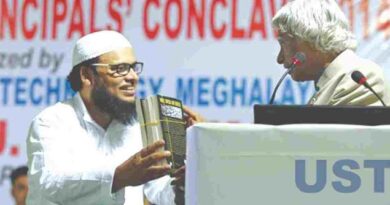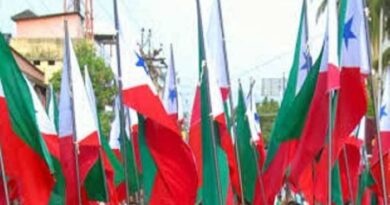Bangladesh: Images Like Dry Flower From My Notebook
You are Here: Tweet, Like, Share, Comment, Subscribe…be the Voice of Free Press!
EDITORIAL: By Saeed Naqvi, Copy Edited By Adam Rizvi, The India Observer, TIO:
(A) Bangladesh was created behind my back. Since I was a reporter with The Statesman, I was surprised that I was being kept away from the Bangladesh war where friend Raghu Rai was producing brilliant photographs and Peter Hazelhurst of The Times, London, was well on his way to winning the Reporter of the year award in the UK. Why was I being held back?
Light dawned with a call from Ram Mohan Rao, Defence Ministry spokesman (he retired as Principal Information Officer) who was in touch with editors about war coverage. He had spoken to my editor and requested me to be at the Defence Ministry within hours. An army vehicle would drive selected foreign correspondents and a handful of us, to the Western theatre where a fierce battle was shaping up in Chhamb.
Defence Ministry within hours. An army vehicle would drive selected foreign correspondents and a handful of us, to the Western theatre where a fierce battle was shaping up in Chhamb.
Also Read, Tweet & Share: ‘India is not a Banana Republic’
This consolation assignment had come my way because after deep deliberation, the Editor and Defence Ministry came to the conclusion that it would be dangerous to send me to the Bangladesh theatre: I might be mistaken for a Punjabi/Pakistani Muslim and killed.
(B) It look establishments a while to realize that the emergence of Bangladesh had radically altered the geography of the subcontinent.
The Partition of India in 1947 had created two nations, India and Pakistan, in hostile competition with each other. The two nations drew global attention on sub continental issues, like Kashmir, for instance, from their respective perspectives.
Also Read, Tweet & Share: Hate Speeches against Indian Muslims continues after Bangladesh Crisis
Bangladesh in 1971 dramatically altered this geography. India became a large country surrounded by small ones.
To manage India’s bigness, leaders like Zia ur Rehman of Bangladesh thought of South Asian Association for Regional Co-operation (SAARC). How was this size going to be managed? The countries encircling India flourished a China card in their lapel.
SAARC was launched in 1980, exactly a year after China embarked on the “Four modernizations” under Deng Xiaoping’s guidance. In other words, from the very beginning of its “rise”, China was in SAARC’s ken. Still basking in the Moscow-Beijing-Washington strategic balance he had single handedly put into place, Henry Kissinger wished more strength to the new found friend – China.
Also Read, Tweet & Share: Modi imitating ‘detractors of democracy’ in Pakistan and Bangladesh, says Kejriwal
Could India have juggled to its advantage the smaller nations encircling it or did it do the right thing by allowing SAARC to flounder on the rocks called Pakistan?
(C) The first time I visited Bangladesh was as part of the press entourage which accompanied Prime Minister, Morarji Desai in 1979.
Dhaka was superficially pleasant but layers upon layers of complexities did not take much time to surface. Gulshan, the colony for the elite, had many homes which reached out to Indian guests with warmth and hospitality but these were also tinged by a Dhaka versus Kolkata complex. One had sensed a similar “Chennai-Colombo” complex in Sri Lanka.
Also Read, Tweet & Share: Is he Dhaka’s Manmohan Singh?
An issue that became something of a metaphor for India-Bangladesh relations surfaced during Morarji Desai’s visit. Among the transactions decided was the gift of substantial quantities of food grains Bangladesh urgently required. Once the delegation level talks were over, Prakash Shah, a senior official in the PMO, invited some of us to his room and switched on the only official Bangla TV that was available. Other officials – Hansmukh Shah, Rajamani, soon joined us.
They were keen to find out how the official media played up the visit, particularly the transfer of grains.
Also Read, Tweet & Share: PM Modi’s India’s Neighborhood ‘First’ Policy Questioned
Hours passed and there was no story. Maybe it has been slotted for prime time? That too passed. Eventually, a tepid mention of the visit was made, but no mention of grains.
Two attitudes stood out. Eager as the Indians were for demonstrable gratitude, the Bangla side was equally determined to deny the Indians just that.
Remember what we learnt from our elders: do good and forget.
Also Read, Tweet & Share: History of BJP’s diplomatic gaffes
(D) Prime Minister Inder Gujral, always thinking out of the box, sometimes without reading South Block too well, invited me to accompany him to the India, Pakistan, Bangladesh summit he had worked hard to organize in Dhaka in January 1998.
Well, on this trip I found myself with friends but all from Bengal: Nikhil Chakravarty, Tarun Basu and every Chatterjee, Mukherjee, Sen, Ghosh within hailing distance. There was method in the composition. I was included, quite simply to provide a Muslim flavouring to the Indian team.
Also Read, Tweet & Share: Trigs on Track -Diplomacy Unwound: Indian Ocean – The Future, if preserved
No sooner was the press delegation past immigration and customs, when a cheerful almost ecstatic group of journalists lunged at the exit from the customs hall and got mixed up with the visiting journos, hugging each other. “Baap re baap”, “Ki khabor”, “Bhalo, bhalo” and other Bengali greetings I do not know.
Never in all my life have I felt more lonesome with my Islamic identity the Prime Minister of India had thrust upon me for the trip.
Linguistic regionalism trumped Islam by a long shot. Was not this precisely which smashed the two-nation theory in 1971 when Bangladesh was born?
Also Read, Tweet & Share: Protest over Lioness Sita and Lion Akbar Caged in Same Enclosure
On the way back I could never forget an expression of extreme satisfaction etched as a permanent smile on Tarun Basu’s face. The fellow was carrying a large ice box filled with Illish from the Padma River, enough to open a small fish kiosk outside his house in Chittaranjan Park.
(E) During Christmas and New Year, one’s social popularity can be gauged by the number of greeting cards on the drawing room cornice. Whenever I received a greeting on tasteful art paper in neat handwriting from Dr. Murli Manohar Joshi in mid April I accepted it as one of Dr. Joshi’s exquisite eccentricities. Wisdom dawned when I found myself in Dhaka on April 15 for a most spectacular celebration of Poelo Baisakh, our/their ancient New Year.
Also Read, Tweet & Share: Big Ben of Kolkata
The maidan was a riot of colour – men in colourful kurtas and women in saris of all hues. There was no forehead without a bindi. At a lunch party in the residence of famous editor Mahfuz Anam, celebrations were on an unimaginable scale. His wife stood at the entrance with a tray full of bindis which she placed on the foreheads of all the women among the guests who entered.
In the distance, a lovely voice sang Rabindra Sangeet interspersed with Nazrul geet which, unlike Tagore songs, are ironically rich with Tandav, Durga, Kali, Shiva.
Also Read more from this Author: From Pakistan To El Salvador: The Bleak Future Of Liberal Democracy
Curated and Compiled by Humra Kidwai
Articles written by contributors have different viewpoints. The views expressed in the articles are the author’s own and not necessarily supported by TIO, The India Observer its affiliates, staff, or the management. Our Articles can be reproduced, with the following conditions, (1) No alteration to the content, (2) Visible, and full credit is given to the Author & Editor. (3) Citing, The India Observer, TIO. In the case of online or electronic media, a link to the original article must be given. Rules are strictly enforced. Any questions, email the Editor at: Mediaiss@gmail.com Or TheIndiaObserver@gmail.com
All Copyrights reserved. Please be guided.




